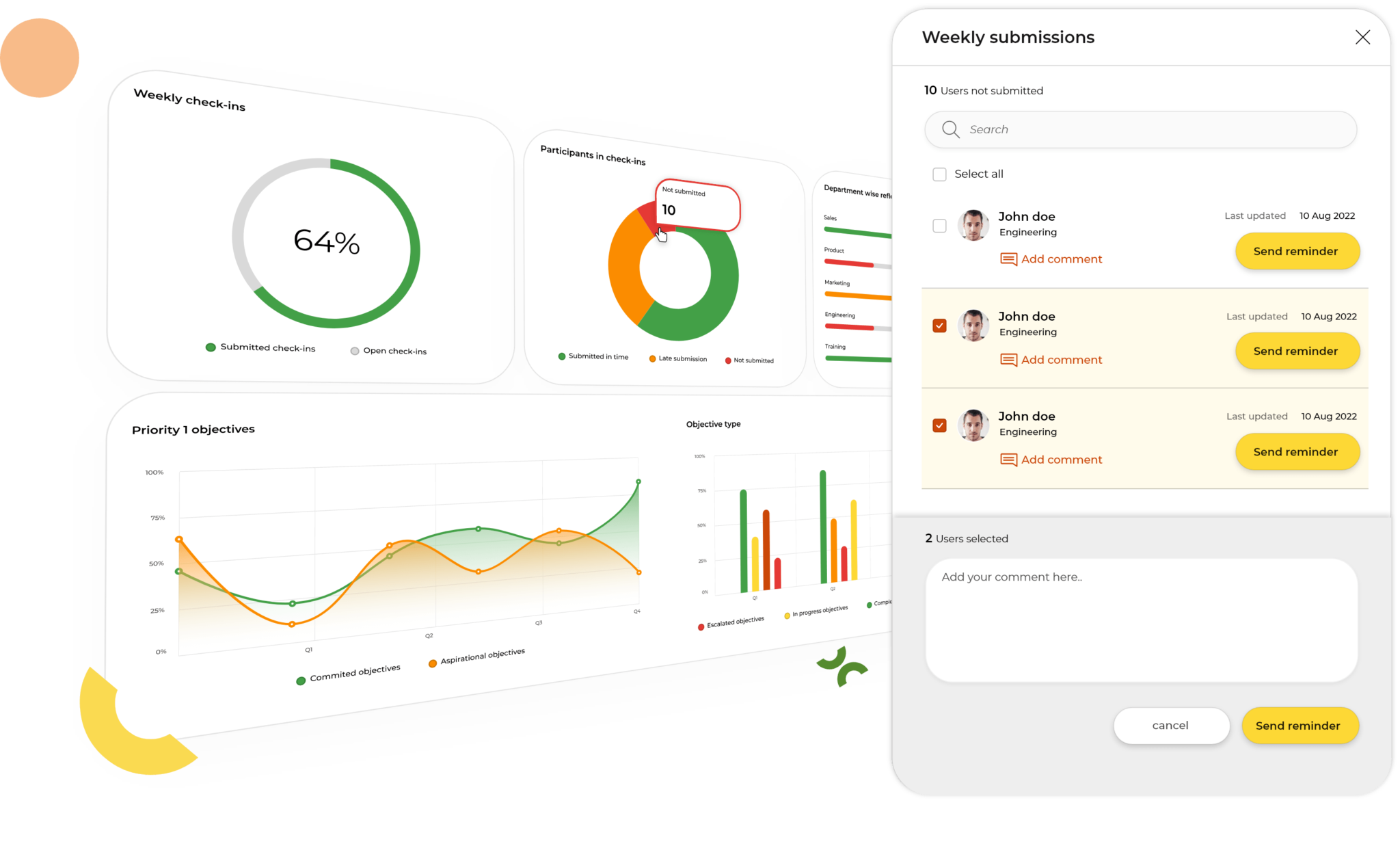Whether you’re a seasoned entrepreneur or just starting out, this powerful methodology can help keep your team aligned, focused, and motivated towards achieving success. In today’s post, we’ll dive deep into the world of goal setting using OKRs, exploring how they work and why they’re so effective. So, grab a cup of coffee and get ready to discover how OKRs can revolutionize the way you do business.
Types of companies using OKRs
There are a variety of companies that can benefit from using OKRs. OKRs can be tailored to fit the needs of any organization, making them an ideal tool for businesses of all sizes and industries. Some of the most common types of companies that use OKRs include start-ups, small businesses, large corporations, non-profit organizations, and government agencies.
OKRs have been proven to be successful in a variety of different industries, including but not limited to technology, healthcare, manufacturing, retail, and financial services.
Defining and implementing effective OKRs
If you’re looking to unlock your business potential, then implementing effective OKRs is the key. But what exactly are OKRs? OKRs stand for Objectives and Key Results, and they are a way of setting measurable goals and tracking progress. When defining OKRs, it’s important to keep the following in mind:
- Objectives should be SMART
- Key results should be quantifiable
- Objectives and key results should be aligned with the company’s strategy
- Objectives and KRs should be updated and reviewed on a regular basis
Once you have a good understanding of what OKRs are and how to define them, it’s time to start implementing them. Here are a few tips:
- Buy-in from all levels of the company
- Assign objectives and key results to individuals and teams
- Set a time limit for each Objective and KR
- Track progress and revise objectives and key results as needed
- Celebrate successes!
Tips for measuring progress with OKRs
Define your objectives
- What are you hoping to achieve with your OKRs?
- What specific goals do you want to accomplish?
- Stay as specific as possible while defining your objectives.
Draft measurable goals that support your objectives
Once you know what you want to achieve, it’s time to set some goals that will help you measure progress. Be sure to make your SMART goals: specific, measurable, achievable, relevant, and time bound.
Create a timeline for each goal
To track progress and ensure that each goal is being met in a timely manner, it’s important to create a timeline for each one. This timeline should include milestones that need to be reached along the way.
Assign responsibility for each goal
Who will be responsible for achieving each goal? Make sure everyone knows their individual roles and responsibilities in reaching the company’s OKRs.
Check in regularly
Progress doesn’t happen overnight, so it’s important to check in on a regular basis to see how everyone is doing. This can be done through weekly or monthly meetings, or simply by sending out periodic emails or updates.
Celebrate successes and learn from failures
As you reach milestones and accomplish goals, take the time to celebrate collective successes! And if there are any setbacks along the way, don’t forget to learn from them so that you can improve moving forward
Ensuring success with OKRs
To ensure success with Objectives and Key Results (OKRs), you can follow these guidelines:
Clear and Aligned Objectives
Start by defining clear and measurable objectives that align with your organization’s overall goals and vision. Objectives should be ambitious yet achievable and provide a sense of direction for your team or organization.
Specific and Measurable Key Results
Break down your objectives into specific and measurable key results. Key results should be quantifiable and provide a concrete way to measure progress and success. Avoid vague or subjective key results that are difficult to evaluate.
Regular Check-Ins and Updates
Establish a regular cadence for reviewing and updating your OKRs. Weekly or biweekly check-ins can help track progress, identify any obstacles or issues, and make necessary adjustments. Transparency and frequent communication are crucial for keeping everyone aligned.
Cascading and Alignment
Ensure alignment and cascading of OKRs across different levels of your organization. Each individual or team should have their own set of OKRs that contribute to the overall objectives of the organization. This alignment makes sure that everyone is focusing on a common goal.
Ownership and Accountability
Assign clear ownership for each objective and key result. Moving to patient responsibility as patients need to update the correct insurance information with payer for processing. This helps create a sense of responsibility and commitment to achieving the desired results.
Stretch and Ambition
Encourage a balance between realistic targets and stretch goals. While it’s important to achieve key results, incorporating some ambitious targets can drive innovation, motivation, and growth. Stretch goals can push individuals and teams to go beyond their comfort zones.
Continuous Learning and Adaptation
OKRs are not set in stone and may require adjustments as circumstances change. Foster a culture of continuous learning, feedback, and adaptation. Regularly evaluate the effectiveness of your OKRs and be willing to modify or pivot when necessary.
Celebrate Achievements and Learn from Failures
Recognize and celebrate progress and achievements when key results are met or exceeded. Acknowledging success boosts morale and motivation. Additionally, treat failures or missed targets as learning opportunities rather than setbacks. Encourage open discussions about what went wrong and how to improve in the future.
Supportive Environment
Create a supportive environment that encourages collaboration, innovation, and risk-taking. Foster a culture where individuals feel empowered to experiment, share ideas, and seek assistance when needed. A psychologically safe environment promotes engagement and productivity.
Regular Reflection and Iteration
At the end of each OKR period, reflect on the process and outcomes. Assess the effectiveness of your OKR implementation, identify areas for improvement, and refine your approach in subsequent cycles. Continuous iteration helps optimize the OKR process over time.
By following these guidelines, you can increase the likelihood of success with OKRs and drive meaningful progress towards your objectives.
Conclusion
OKRs are a proven, simple tool to measure and track progress while keeping everyone in the organization focused on achieving ambitious goals. It gives you and your team an opportunity to work together creatively towards a shared outcome, rather than competing against each other for individual recognition. By setting effective objectives and key results with clear deadlines, you can unlock the potential of your business by ensuring everyone is working collaboratively towards success. To More About OKRs and Goal Tracking Visit Our website and our social media platform.
Contents




 for growth seeking organizations.
for growth seeking organizations.
Comments are closed